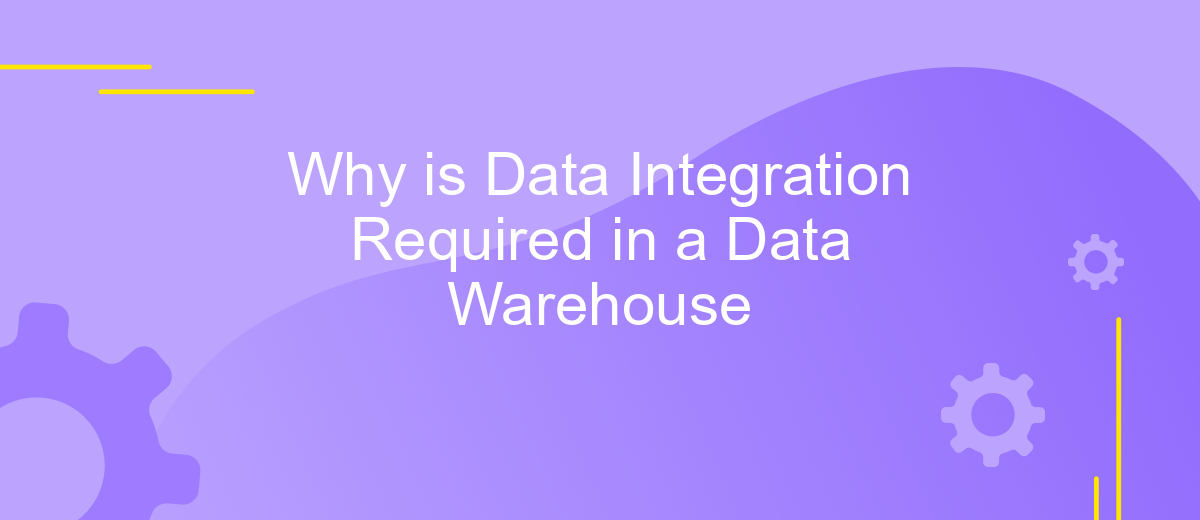Why is Data Integration Required in a Data Warehouse
In the rapidly evolving landscape of data management, data integration in a data warehouse is crucial for organizations aiming to harness the full potential of their data assets. By consolidating disparate data sources into a unified repository, businesses can achieve enhanced data accuracy, improved decision-making, and streamlined operations. This article explores the fundamental reasons why data integration is indispensable for optimizing the functionality and value of a data warehouse.
The Challenges of Siloed Data
In today's data-driven world, organizations often face the challenge of managing siloed data. Siloed data refers to information that is isolated within separate departments or systems, hindering its accessibility and use across the organization. This fragmentation can lead to inefficiencies, as teams struggle to obtain a comprehensive view of the data necessary for informed decision-making.
- Lack of data consistency: Different departments may store similar data in varying formats, leading to discrepancies.
- Increased operational costs: Maintaining multiple data silos can be resource-intensive and costly.
- Limited data insights: Siloed data restricts the ability to gain holistic insights, impacting strategic initiatives.
- Data security risks: Multiple storage locations increase the potential for breaches and data loss.
Addressing these challenges requires a strategic approach to data integration. By consolidating data into a unified warehouse, organizations can ensure consistency, reduce costs, and enhance security. This integration not only facilitates better data management but also empowers businesses to leverage comprehensive insights, driving innovation and competitive advantage.
Understanding Data Warehousing and its Purpose

Data warehousing is a critical component in the realm of data management, serving as a centralized repository for storing and managing vast amounts of structured and unstructured data. Its primary purpose is to consolidate data from various sources into a single, unified view, enabling organizations to perform comprehensive analysis and generate actionable insights. By integrating disparate data sources, a data warehouse ensures consistency, accuracy, and accessibility of data, which is essential for informed decision-making processes. This integration is crucial for businesses aiming to harness the full potential of their data assets.
Moreover, data warehousing supports advanced analytics and reporting by providing a robust infrastructure that can handle complex queries efficiently. To streamline the integration process, tools like ApiX-Drive can be employed, offering seamless connectivity between diverse data sources and the data warehouse. ApiX-Drive simplifies the integration setup, reducing the technical burden on IT teams and allowing for real-time data synchronization. This enhances the overall agility and responsiveness of the organization, empowering stakeholders with timely and relevant information to drive strategic initiatives.
The Role of Data Integration in a Data Warehouse

Data integration plays a crucial role in the effectiveness of a data warehouse by ensuring that disparate data sources are combined into a cohesive, unified view. This process enables organizations to derive meaningful insights from their data, supporting informed decision-making and strategic planning. By integrating data, companies can eliminate silos, improve data quality, and ensure consistency across various systems.
- Data Consistency: Integration ensures that data from different sources is consistent, reducing discrepancies and errors.
- Enhanced Data Quality: It helps in cleansing and transforming data, improving its accuracy and reliability.
- Comprehensive Reporting: With integrated data, organizations can generate comprehensive reports that reflect a holistic view of business operations.
- Improved Decision-Making: Access to integrated data allows for better analysis and insights, leading to more informed decisions.
- Operational Efficiency: Streamlining data from multiple sources enhances operational processes and reduces redundancy.
In conclusion, data integration is indispensable for a data warehouse, serving as the backbone that supports various analytical and operational functions. By harmonizing data from different origins, it provides a solid foundation for accurate reporting and strategic business insights, ultimately driving organizational success.
Benefits of Data Integration for Data Warehousing

Data integration is a crucial component in the architecture of a data warehouse, ensuring that diverse data sources are seamlessly combined into a unified view. This process not only enhances the accuracy of data analysis but also improves decision-making capabilities by providing a holistic view of organizational data.
Integrating data from various sources allows businesses to maintain data consistency and quality, which are vital for generating reliable insights. By consolidating data, organizations can eliminate redundancies and discrepancies, leading to more efficient data management and retrieval.
- Improved data accuracy and consistency
- Streamlined data management processes
- Enhanced decision-making capabilities
- Elimination of data silos
- Increased operational efficiency
Ultimately, data integration in a data warehouse supports better strategic planning and operational efficiency. By breaking down data silos, businesses can foster collaboration across departments, ensuring that everyone has access to the same reliable data. This unified approach not only saves time and resources but also empowers organizations to respond swiftly to market changes and customer needs.
Data Integration Best Practices for a Successful Data Warehouse
Successful data integration in a data warehouse requires meticulous planning and execution. Begin by clearly defining your data requirements and establishing a robust data governance framework. This ensures consistency and quality across all data sources. Implementing standardized data formats and protocols is crucial for seamless integration. Regularly update and clean data to maintain accuracy and reliability, preventing discrepancies and outdated information from skewing analyses.
Utilize automated integration tools like ApiX-Drive to streamline the process. These platforms facilitate easy connection between diverse data sources, reducing manual effort and potential errors. Prioritize scalability and flexibility in your integration strategy to accommodate future growth and evolving business needs. Conduct regular audits and performance assessments to identify and rectify any bottlenecks or inefficiencies. By adhering to these best practices, organizations can enhance their data warehouse's performance, ensuring it serves as a reliable foundation for data-driven decision-making.
FAQ
Why is data integration necessary for a data warehouse?
What are the benefits of integrating data in a data warehouse?
How does data integration improve data quality in a data warehouse?
What challenges can arise during data integration in a data warehouse?
How can automation tools assist in data integration for a data warehouse?
Time is the most valuable resource for business today. Almost half of it is wasted on routine tasks. Your employees are constantly forced to perform monotonous tasks that are difficult to classify as important and specialized. You can leave everything as it is by hiring additional employees, or you can automate most of the business processes using the ApiX-Drive online connector to get rid of unnecessary time and money expenses once and for all. The choice is yours!

